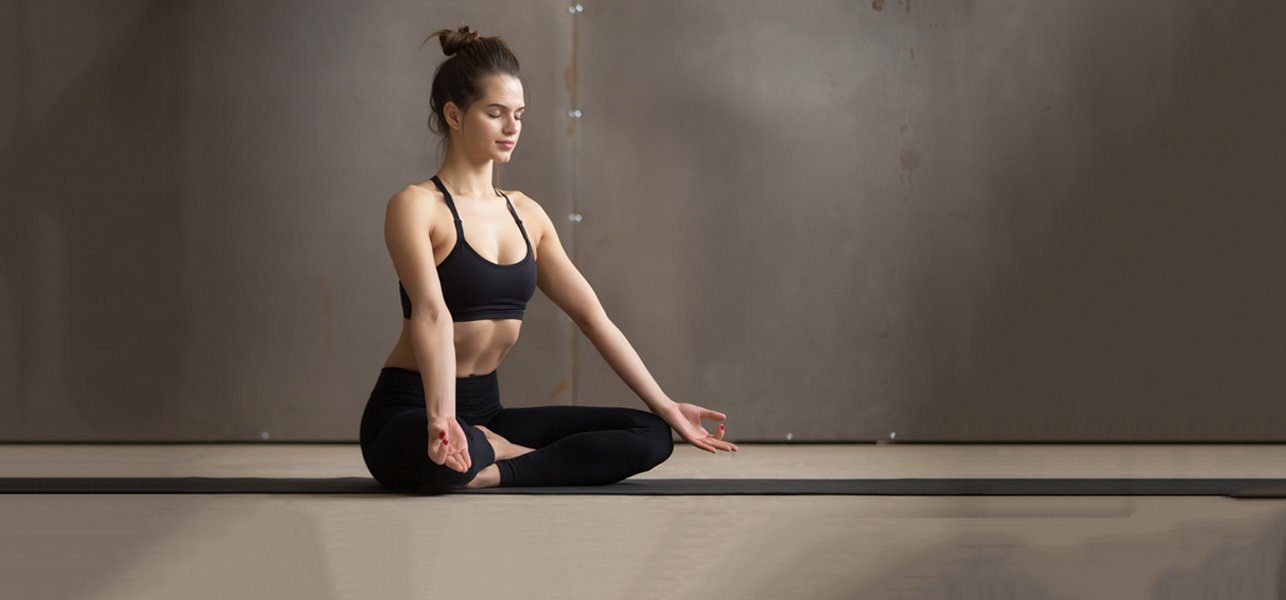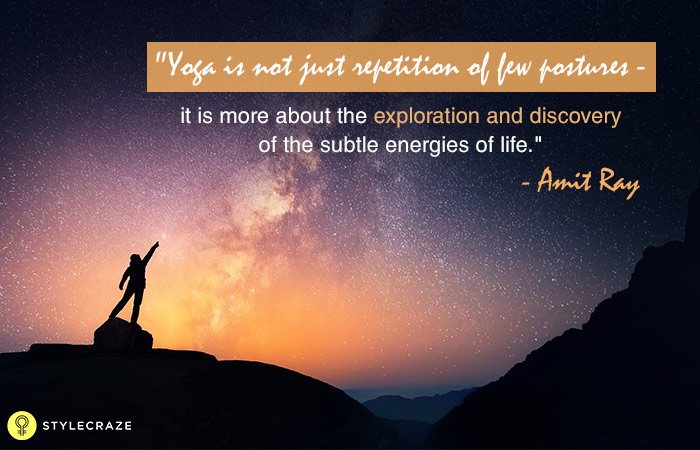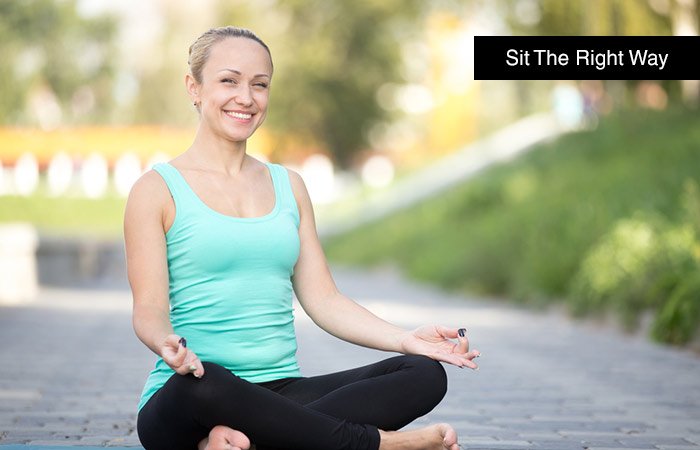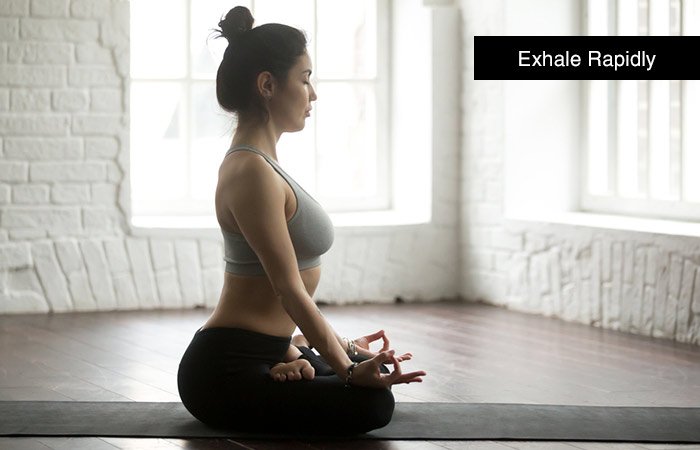Pranayama
Long days of work are making you dull and lifeless. Added to that are the constant heat and pollution. Unfortunately, you have absolutely no time to go to a peaceful place and rejuvenate. Then, what do you do to feel your energies, detoxify, and attain balance within the space you have? There is a way, and it is called Kapalbhati Pranayama. Find out all about the process and what it does to you by scrolling down.
What Is Kapalbhati Pranayama?
Long long ago, a set of breathing techniques were devised to help people with their overall well-being. It is called the yogic breath, and it is an important aspect of yoga. Kapalbhati Pranayama is one among them, and it has been keeping people healthy and pure since ages.
‘Kapal’ means forehead, ‘Bhati’ means shining, and ‘Pranayama’ means breathing technique. Kapalbhati Pranayama is a Sanskrit word that means forehead shining breathing technique. It is named so as the regular practice of the method gives you a shining forehead and bright intellect.
The method needs minimal effort and comes with a plethora of benefits. It is a ‘shat’ kriya technique that flushes out toxic air from your body, cleansing it in the process. With cleansing come various mental and physical benefits. Kapalbhati requires you to sit in a yogic posture and breathe. It is more of a breathing exercise than assuming a pose with the help of your limbs. It is part of the Eight Limbs Of Yoga as compiled in Yoga Sutras by Sage Patanjali. Practicing Kapalbhati keeps you healthy in mind, body, and spirit.
Now that we know the unique nature of Kapalbhati, let’s find out how to practice it.
How To Do Kapalbhati
- Sit The Right Way
- Inhale Well
- Exhale Rapidly
- Relax Deeply
1. Sit The Right Way
Image: Shutterstock
Sit comfortably in Sukhasana or the Easy Pose. Place your palms on your knees. Ensure they are facing upwards. Direct your focus and awareness to the belly region.
Back To TOC
2. Inhale Well
Image: Shutterstock
Inhale deeply with both your nostrils, filling both your lungs with air. The breath should be a slow and steady intake of air, concentrating on the airflow and breathing in a calm manner.
Back To TOC
3. Exhale Rapidly
Image: Shutterstock
Pull your stomach in towards your back. Get your navel closer to the spine as much as you can. Place your right hand on the navel to feel your abdominal muscles contracting. As you relax from the contraction, you exhale air in a short burst followed by an automatic inhalation. During exhalation, there will be a hissing sound. At that point, feel that all the bad in your body is coming out. As you release your abdomen, you can feel the air filling your lungs.
Back To TOC
4. Relax Deeply
Image: Shutterstock
Inhale and exhale in this manner for about 20 times. That will be one round of Kapalbhati. Rest after you complete one round by sitting silently in Sukhasana with your eyes closed and observe the sensations erupting in your body.
Back To TOC
Types Of Kapalbhati Pranayama
There are three types of Kapalbhati Pranayama. They are:
- Vatakrama Kapalbhati – This is the kind we discussed above, where the exhalation is active, and the inhalation is passive.
- Vyutkrama Kapalbhati – This type requires you to sniff in water through your nostrils, let it flow down your mouth, and eventually spit it out through your lips.
- Sheetkrama Kapalbhati – This is the opposite of Vyutkrama Kapalbhati, and it requires you to take in water from the mouth and expel it through your nostrils.
Benefits Of Kapalbhati Pranayama
- Kapalbhati generates heat in your body, dissolving toxins and other waste matter.
- It improves the functioning of the kidneys and liver.
- It removes stress from the eyes and erases dark circles.
- It enhances blood circulation and digestion.
- The method increases your metabolic rate, thus aiding rapid weight loss.
- It stimulates your abdominal organs and is thus helpful for diabetic patients.
- It rejuvenates your brain and energizes your nerves.
- The process calms you and uplifts your mind.
- It gives you a sense of balance and sensibility, making you feel pure and clutter-free.
- It eliminates acidity and gas-related problems.
- Kapalbhati strengthens your lungs and increases their capacity.
- Regular practice of Kapalbhati will activate you and make your face glow radiantly.
- It improves memory and concentration power.
- The practice clears and activates the chakras in your body.
- It helps in curing asthma, sinus, and hair loss.
- It keeps depression at bay and fills you with positivity.
Side Effects
- Kapalbhati may lead to hypertension and hernia.
- It can cause dizziness and headaches.
- You might feel a vomiting sensation.
- Your mouth can become dry.
- You might experience excessive perspiration and salivation.
Precautions
- Heart patients should go slow with their exhaling.
- Practice Kapalbhati in the morning on an empty stomach.
- Those with high blood pressure should reduce their rate of Kapalbhati.
- Learn Kapalbhati from a certified yoga teacher after getting a health check-up done.
- It is best to avoid this technique if you are pregnant or menstruating.
- Avoid Kapalbhati if you have a slipped disc or a stent.
- If you have ulcers, be careful while practicing Kapalbhati.
- Kapalbhati is an advanced breathing technique. Attempt it only after becoming proficient in the basic level pranayama.
- Keep in mind your limitations during the practice and work through the process accordingly.
- Be cautious and aware during the breathing exercise if you have respiratory issues like asthma.
Now that we know the workings of the Kapalbhati, let’s find the answers to some of the commonly asked questions regarding it.
Expert’s Answers For Readers’ Questions
Can we practice Kapalbhati Pranayama after a run?
Yes, you can practice Kapalbhati Pranayama either before or after a run. However, it is best to practice it first thing in the morning on an empty stomach so that it rejuvenates and prepares you for the rest of the day.
Can we eat immediately after practicing Kapalbhati Pranayama?
It best to wait for 20 to 30 minutes after a session of Kapalbhati Pranayama to prevent the energy generated from being used to digest food.
Breath is the source of life. Breathing effortlessly and consciously is powerful and has positive effects on your life. When all it takes is to sit in a place and breathe right to gain many benefits, it only makes sense that you begin the Kapalbhati practice immediately. Get going!















